During this time of quarantine, I’m thankful for the many online collections that allow us to imaginatively visit museums, zoos, aquariums, and even other planets from home. The University of Arizona HiRISE (High Resolution Imaging Science Experiment) camera makes it possible to see incredibly detailed images of the surface of Mars, and through the writing prompts below, we invite you to imagine yourself in those strange yet oddly familiar landscapes.
HiRISE is a camera onboard the Mars Reconnaissance Orbiter, designed and built under the direction of the University of Arizona’s Lunar and Planetary Laboratory. The camera’s telescopic lens allows it to take photographs at higher resolutions than any previous mission, permitting scientists to distinguish features as small as one meter across. HiRISE sees Mars in a different part of the visible light spectrum than would the human eye; many of the images presented here are “false color,” or not the colors that you would see if you were looking that these landscapes directly.
We hope you will enjoy this small sampling of images from HiRISE, and that you will write a poem starting from the questions and prompts below. Or, dive into the full library of HiRISE images for inspiration by visiting www.uahirise.org. Images from HiRISE are within the public domain.
The Color Wonderland of Mawrth Vallis
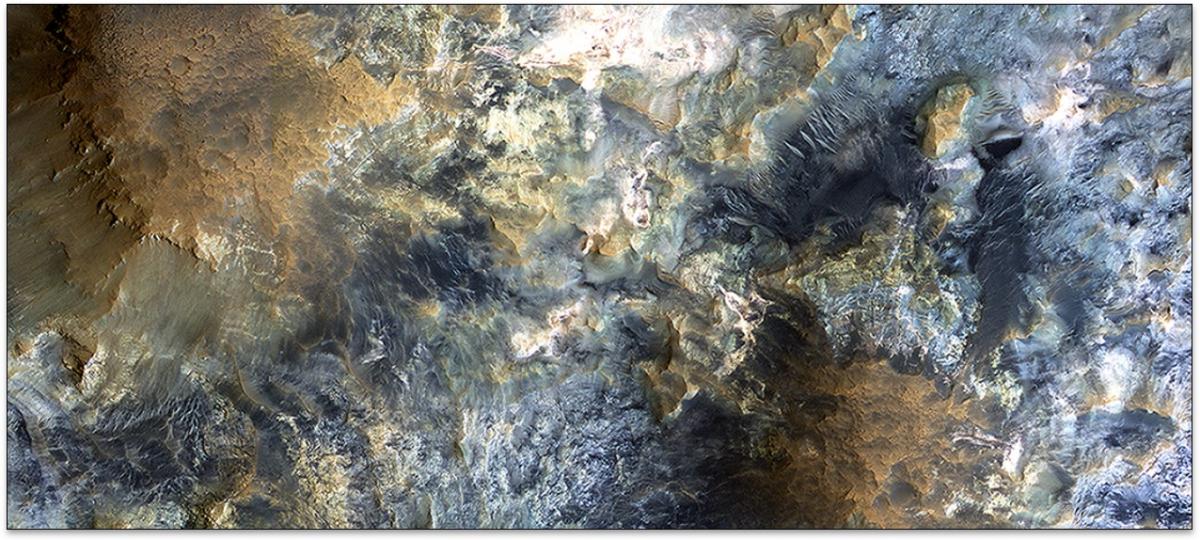
1. Imagine yourself standing in this landscape. Write five lines that begin with the words “I see.”
2. What would it be like to be in this landscape alone?
Curiosity Rover at Pahrump Hills
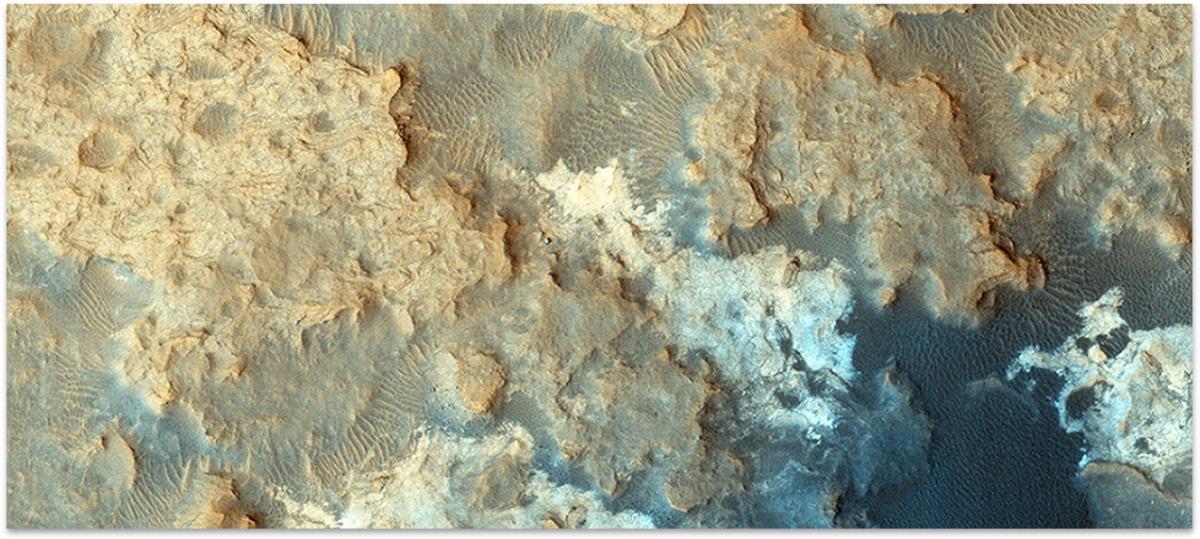
3. What does this photograph make you think about the planet Earth?
4. Imagine yourself hovering above this landscape. Make a list of what you notice.
An Inverted Crater
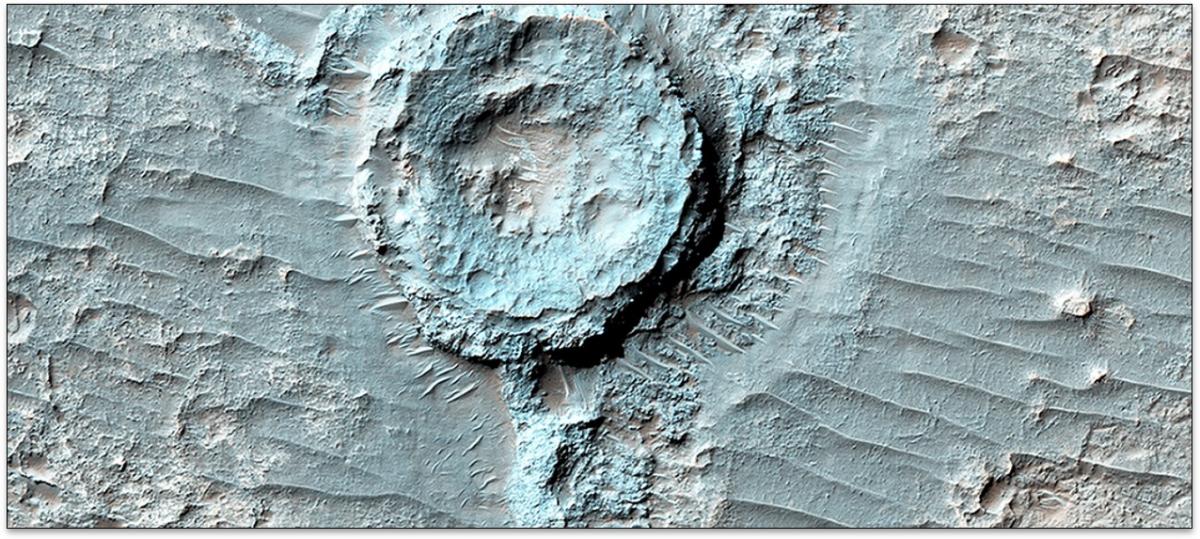
5. Choose a word from the photograph’s caption that is completely unfamiliar to you. Write a poem using this word as the title.
6. What would it be like to be in this landscape with 100 other people?
Frosty Alcoves on Kaiser Crater Dunes
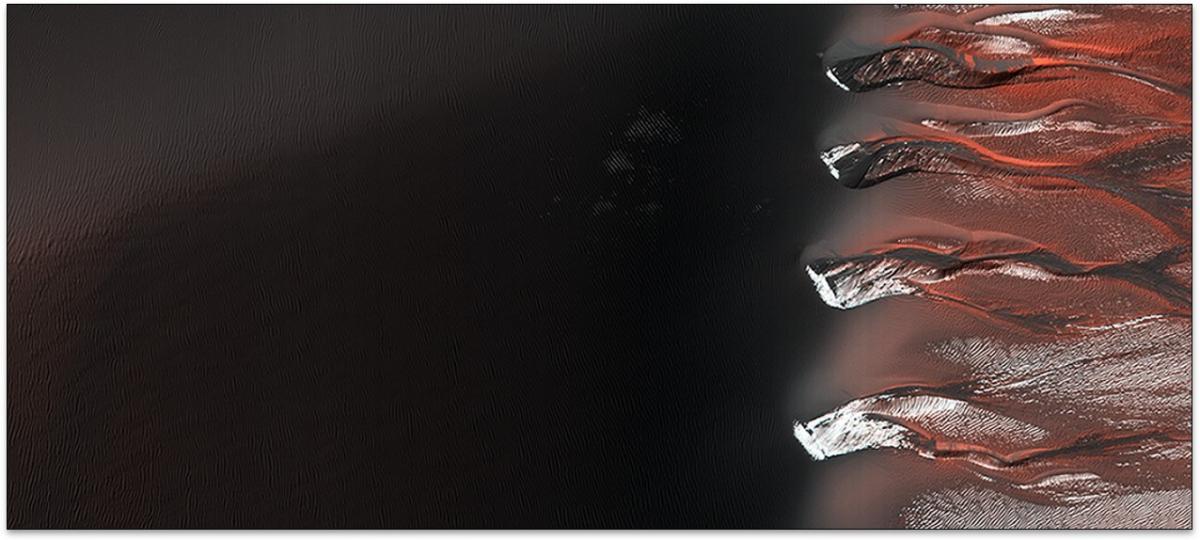
7. Imagine a moment from your childhood reset in this landscape. What happens?
8. What does this photograph make you think about your neighborhood?
Layered Yardangs

9. Choose a word from the photograph’s caption that you particularly like. Write a poem using this word as the title.
10. What would it be like to be in this landscape if you were a scientific instrument?
Drag Folds in the North Polar Layered Deposits
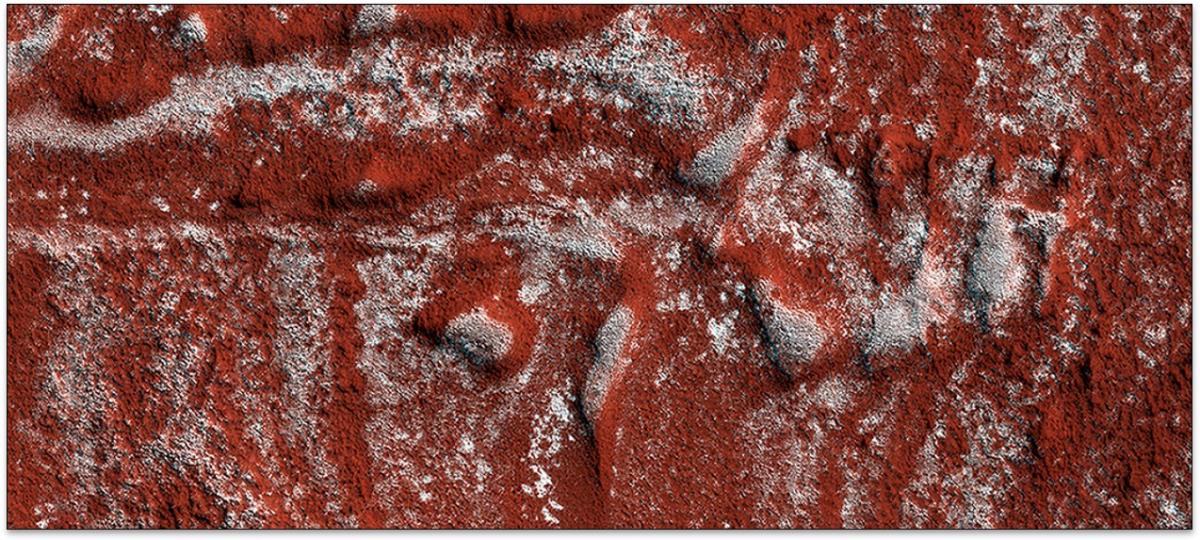
11. Imagine yourself standing in this landscape with your eyes closed. Write five lines that begin with the words “I hear.”
12. What does this photograph make you think about the future?
These writing prompts were originally presented alongside The Poetry of Spaceflight exhibit in Fall 2016.

